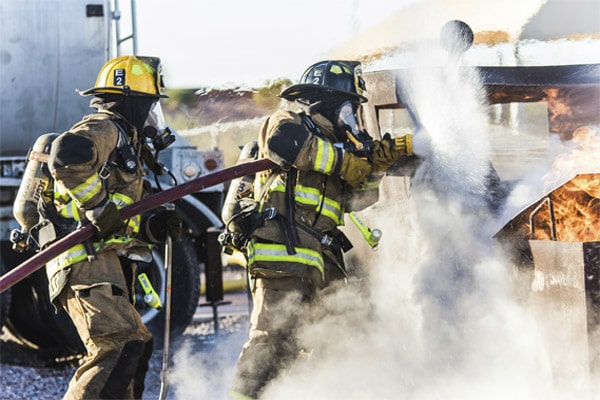The environmental and health impacts of Aqueous Film-Forming Foam (AFFF) used in firefighting have been intensely scrutinized in recent years. This scenario is prompting a search for innovative and sustainable alternatives. As concerns about AFFF grow, fire departments and industries are exploring new approaches to fire suppression that are effective, safe, and environmentally friendly.
This article examines the landscape of AFFF alternatives, highlighting the latest developments and solutions that aim to revolutionize firefighting practices.
Need for Exploring Alternatives to AFFF Firefighting Foam
Exploring alternatives to AFFF firefighting foam stems from a growing awareness of its use’s environmental and health risks. AFFF contains per- and polyfluoroalkyl substances (PFAS), which are persistent in the environment and hard to decompose. According to TorHoerman Law, PFAS have been linked to a higher risk of severe health issues, including cancer and developmental disorders.
However, the AFFF has been used since the 1950s, and it has already impacted thousands of firefighters and military personnel with significant health issues. These firefighters and military personnel are now seeking justice by filing a lawsuit against the manufacturers.
The firefighter foam lawsuit is meant to hold the manufacturers of AFFF accountable for risking the lives of firefighters and the general public. If anyone develops cancer or significant health issues due to exposure to PFAS, they can claim compensation by filing a lawsuit.
The widespread use of AFFF has led to PFAS contamination in water sources, soil, and wildlife, endangering ecosystems and human health. To mitigate these risks, there is a pressing need to find alternative firefighting foams that are effective, safer, and environmentally sustainable.
READ MORE– How Medical Records and Expert Testimonies Impact Car Accident Claims
Water Mist Systems
Water mist systems offer a promising alternative to AFFF in firefighting due to their effectiveness and environmental safety. High-pressure water mist systems offer a notable reduction in water consumption compared to conventional sprinkler setups, thereby reducing property damage from water.
Verified Market Research reports that the rising environmental and fire safety concerns contribute to the growth of the high-pressure water mist system market. The market is valued at $1.095 billion in 2023 and is forecasted to attain $2.023 billion by 2030. The distinguishing feature of high-pressure water mist systems lies in their ability to generate finely atomized water particles. Usually, the droplet size of water is in the micrometer range.
Water mist can quickly cool down fires, reduce oxygen levels, and create a barrier between the fire and surrounding surfaces. Unlike AFFF, water mist systems do not contain harmful chemicals and are, therefore, safer for firefighters and the environment.
Water mist systems can also be integrated into existing infrastructure, making them a practical and cost-effective alternative for various firefighting applications.
Dry Chemical Fire Extinguishers
Dry chemical fire extinguishers offer several advantages over AFFF as a firefighting alternative. AFFF contains chemicals that harm the environment and human health, but dry powder extinguishers use non-toxic substances like sodium or potassium bicarbonate.
According to NFPA, there are two main types of dry chemical fire extinguishers: ordinary dry chemicals and multipurpose dry chemicals. Ordinary dry chemicals use sodium bicarbonate or potassium bicarbonate as the base agent, with the extinguishing chemical in the form of very fine powder. They are mostly used for Class B fires. Multipurpose dry chemicals use Ammonium Phosphate as the base agent. They are used for Class A fires.
Dry chemical extinguishers are handy in various environments, including industrial settings, vehicles, and homes. They are also easy to use and maintain, making them a practical and cost-effective alternative to AFFF.
Carbon Dioxide (CO2) Extinguishing Systems
Carbon dioxide (CO2) extinguishing systems are highly effective and popular due to their fast and efficient suppression of fires. When discharged, CO2 displaces oxygen, suffocating the fire and preventing it from spreading.
The U.S. EPA notes that the CO2 extinguishing system protects approximately 20% of the special hazard fires. Special hazards fire refers to the one that requires using some fire extinguishing agent other than water. CO2 extinguishers have been widely used for many years globally in the special hazard fire protection industry.
Unlike AFFF, which can leave a residue and requires cleanup, CO2 leaves no residue, making it ideal for sensitive equipment and areas. CO2 extinguishing systems are also non-conductive, making them safe for electrical fires.
Additionally, CO2 is a naturally occurring gas that does not contribute to environmental pollution, making it a more environmentally friendly alternative to AFFF. The effectiveness, cleanliness, and environmental safety of CO2 extinguishing systems make them a preferred choice for many fire suppression applications.
Foam-Water Sprinkler Systems
Foam-water sprinkler systems combine the benefits of foam and water to provide an effective firefighting solution. They use a mixture of foam concentrate and water to create a foam blanket that suppresses fires by smothering them and cooling the fuel surface.
Foam-water sprinkler systems are advantageous because they can quickly and efficiently suppress various types of fires, including those involving flammable liquids and solids. Unlike AFFF, a foam concentrate that requires mixing with water before use, foam-water sprinkler systems are pre-mixed and ready to use. They are faster to deploy in emergencies.
Moreover, foam-water sprinkler systems can cover larger areas and are more effective at controlling fires than AFFF, making them a preferred choice.
Clean Agent Fire Suppression Systems
Clean agent fire suppression systems curb fires quickly without damaging the protected equipment or the environment. They use inert gases or chemical agents that are electrically nonconductive and leave no residue after discharge.
Clean agent systems effectively suppress fires involving delicate or sensitive equipment, such as computer servers, electrical rooms, and archives. Unlike AFFF, clean agent systems are safe for use in occupied spaces and don’t endanger human health or the environment. Using clean agent fire suppression systems can significantly reduce the harmful effects of AFFF, such as environmental contamination and health risks.
Gel-Based Fire Suppressants
Gel-based fire suppressants are a type of firefighting agent that can be applied to various surfaces to prevent ignition or suppress fires. These gels are typically water-based and contain thickening agents, giving them a gel-like consistency. When applied, the gel forms a protective barrier on the fuel surface and prevents oxygen from reaching the fire, thereby suppressing it.
Gel-based fire suppressants are advantageous because they adhere well to vertical and horizontal surfaces, making them effective in situations where others may run off. They can also be applied using standard firefighting equipment, such as hoses and nozzles, making them easy to use in emergencies. Compared to AFFF, gel-based fire suppressants are more versatile and can be used in various firefighting applications.
FAQs
Can Alternative Firefighting Foams Provide the Same Level of Fire Suppression as AFFF Foam?
Right now, alternative firefighting foams aren’t quite there to match AFFF’s fire suppression ability across all fire types. While some new foams show promise for specific situations, there’s no perfect replacement yet. The good news is that researchers are actively developing alternatives that can extinguish fires effectively without harming the environment.
How Do the Costs of Alternative Firefighting Foams Compare to AFFF Foam?
The costs of alternative firefighting foams can vary but are generally comparable to AFFF foam. The cost depends on factors such as the type of foam, quantity needed, and supplier pricing.
Are There Any Limitations or Drawbacks to Using Alternative Firefighting Foams in Certain Situations?
Some foams may not be as effective on certain types of fires, and their compatibility with existing firefighting equipment and systems may vary. Additionally, some alternative foams may have higher costs or require more specialized training for their use.
In conclusion, the landscape of firefighting foam alternatives is evolving rapidly, driven by increasing concerns over the environmental and health impacts of AFFF. While these alternative foams show great promise, it’s essential to consider their limitations and compatibility with existing firefighting systems. The shift towards alternative foams represents a positive step towards safer, more sustainable firefighting practices.










